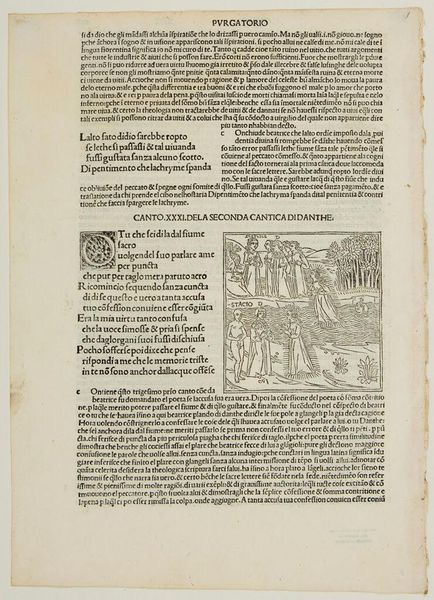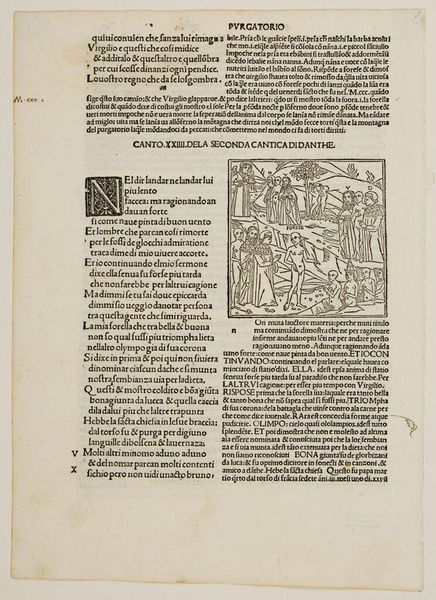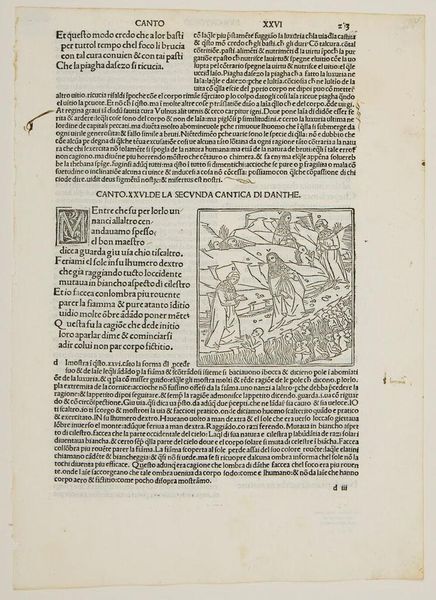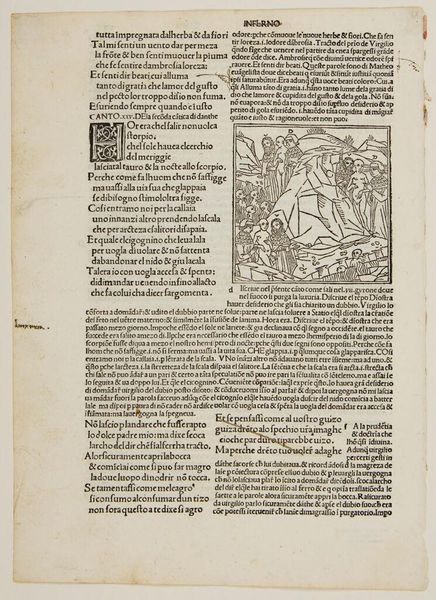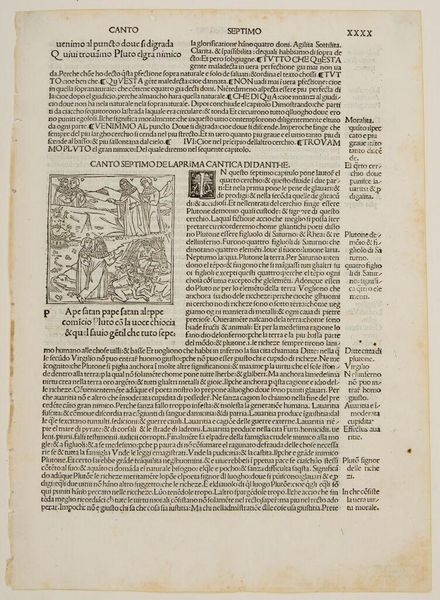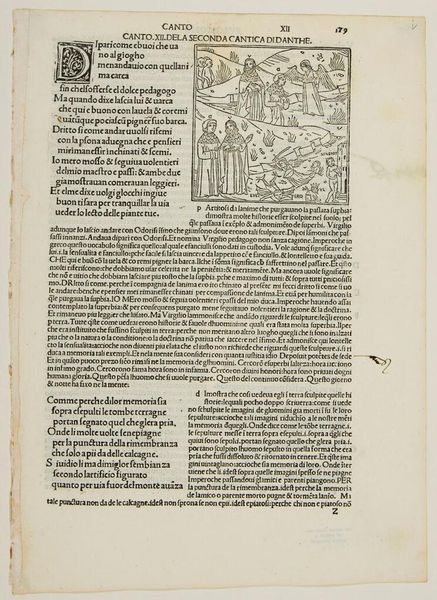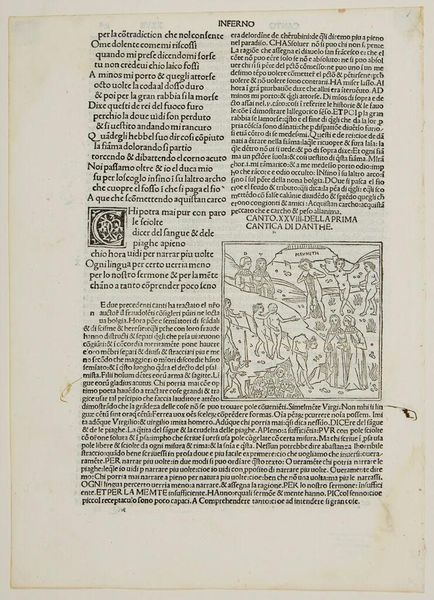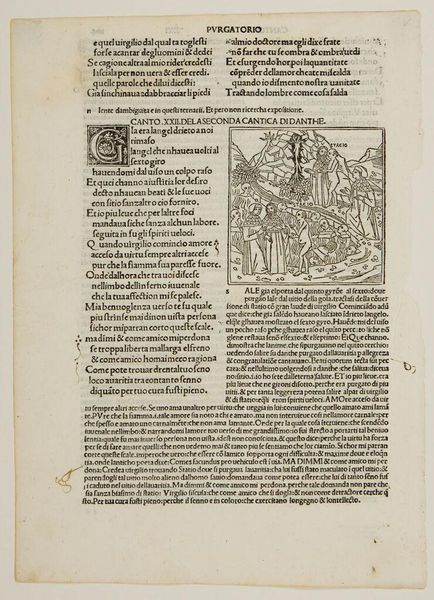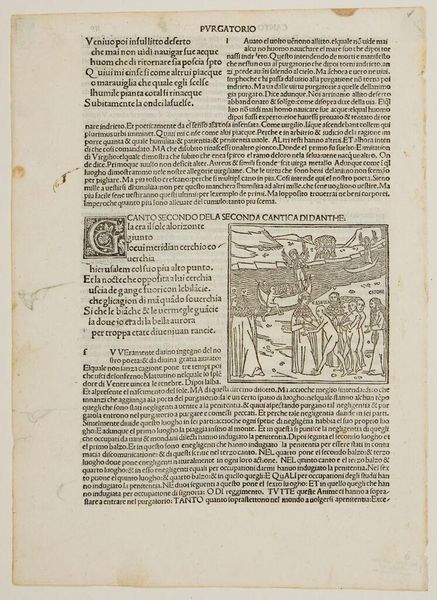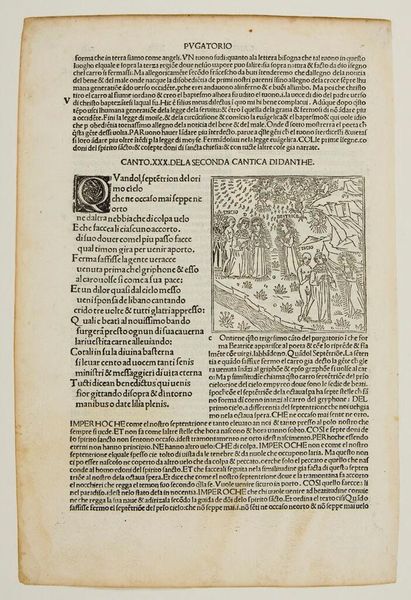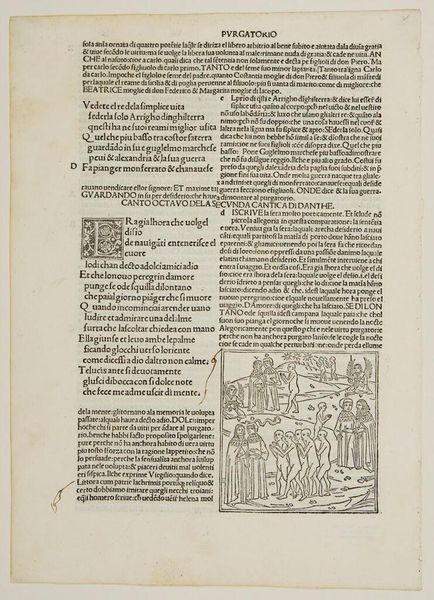
Canto XXXIII. The Earthly Paradise: The Prophesy of Beatrice; Departure of the Heavenly Pageant c. 15th century
0:00
0:00
Copyright: CC0 1.0
Curator: Here we have an anonymous woodcut illustration, likely from the late 15th century, accompanying Canto XXXIII of Dante's *Purgatorio*, part of *The Divine Comedy*. Editor: My initial impression is a kind of stark, unsettling beauty. The composition is so rigid, and the figures, though small, exude a monumental quality. Curator: Indeed. The artist uses dense lines to create a sense of depth, contrasting the earthly realm with the divine. Note Beatrice's prominent placement, symbolizing divine wisdom guiding Dante. Editor: I'm struck by how the artist uses such simple means to convey complex theological ideas. The rigid figures and architecture convey a sense of established order, perhaps reflecting the Church's authority. Curator: Precisely, this depiction offers a glimpse into the socio-political landscape of the time, where religious doctrine heavily influenced artistic expression. Editor: Looking at it this way, it makes me think about the role of the artist during the time and how their work helped reinforce the religious beliefs of the time. Curator: A powerful reminder of art's role in shaping our understanding of history and the ever-evolving relationship between faith and art. Editor: It leaves one to wonder, doesn't it, how the relationship between the divine and the mortal plays out in our contemporary artistic landscape.
Comments
No comments
Be the first to comment and join the conversation on the ultimate creative platform.
